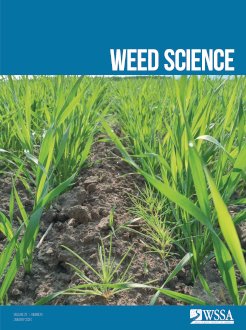The evolution of herbicide resistance in weeds can reduce the herbicide's efficacy, depleting crop yield and quality. Our group previously confirmed 2,4-D resistance in three Palmer amaranth (Amaranthus palmeri S. Watson) populations (R1 to R3). In the current study, the first filial (F1) seeds of 2,4-D–resistant populations were subjected to screening tests for resistance to other auxin-mimicking herbicides, florpyrauxifen-benzyl (FPB; 30 g ai ha–1) and dicamba (560 g ae ha–1). Dicamba killed all resistant populations. FPB provided 100% control of only the R3 population. Sensitivities to FPB were reduced by 2 and 35 percentage points in R1 and R2 populations, respectively. Pretreatment with malathion increased FPB sensitivity by 15 percentage points in the R2 population. FPB resistance characterization and mechanism were evaluated using a purified line of the R2 population (F2). The FPB sensitivity was 29-fold lower in the F2 line than in the susceptible (S) standard. Absorption, translocation, and total metabolism of FPB were similar for S and R2 populations. However, less florpyrauxifen-acid (FPA) was detected in the R2 population (17.0% to 25.4%) than in the S population (22.8% to 33.2%), due to its rapid metabolism and/or reduced production with resistance evolution. Because the results of the non–target site resistance mechanism evaluation observed in this study were insufficient to account for the 29-fold reduced sensitivity of the R2 population to FPB, further genetic studies are needed to investigate the presence of target-site resistance in that population.
How to translate text using browser tools
27 December 2023
Non–Target Site Mechanisms of Cross-Resistance Evolution to Florpyrauxifen-Benzyl in 2,4-D–Resistant Palmer Amaranth (Amaranthus palmeri)
Jeong-In Hwang,
Jason K. Norsworthy,
L. Tom Barber,
Thomas R. Butts
ACCESS THE FULL ARTICLE

Weed Science
Vol. 72 • No. 1
January 2024
Vol. 72 • No. 1
January 2024
Auxin mimics
florpyrauxifen-benzyl
Herbicide resistance
metabolism





